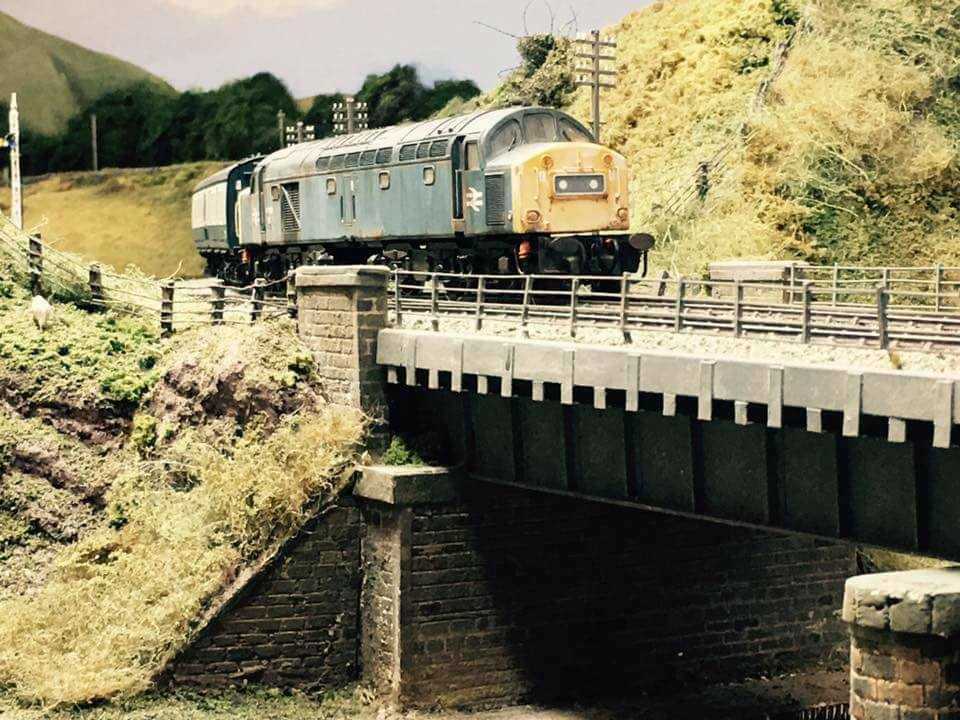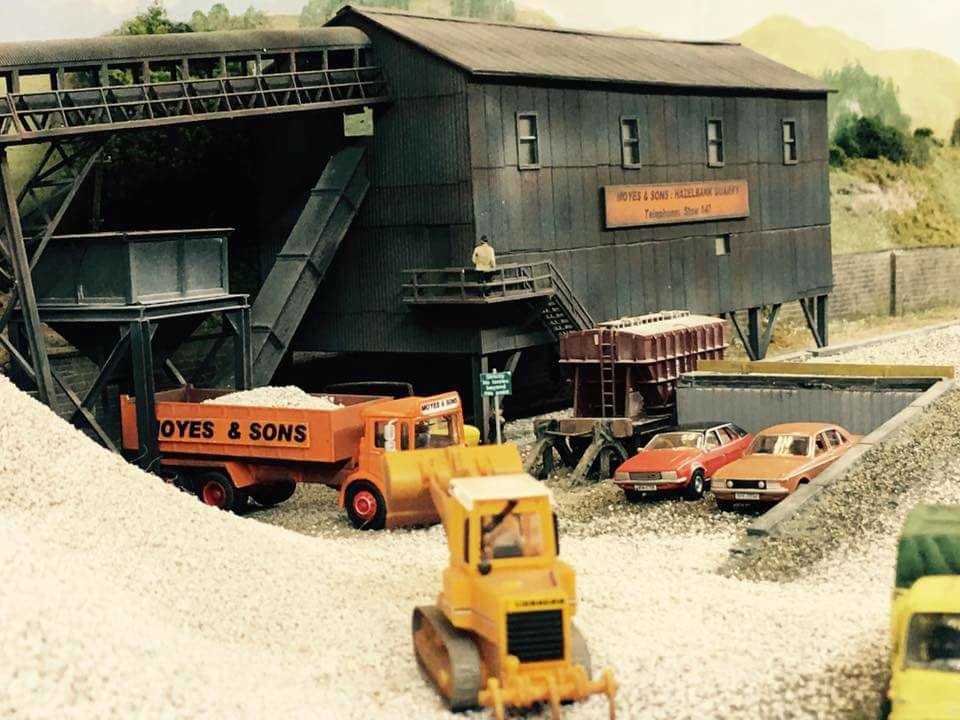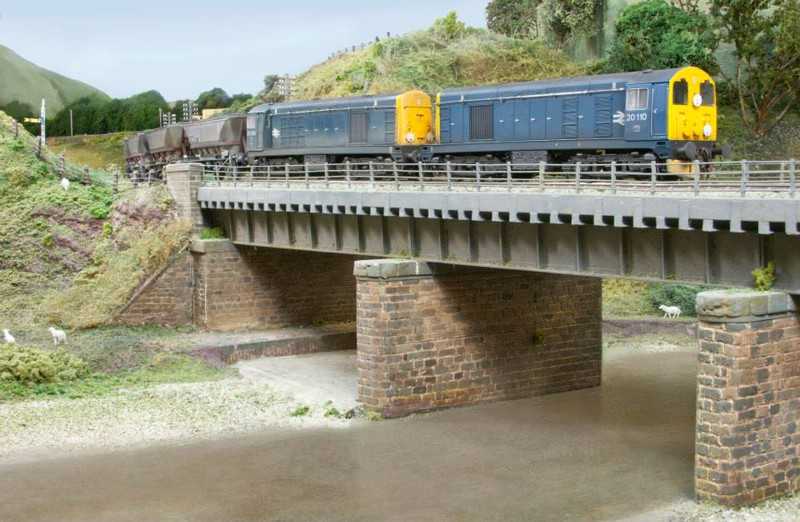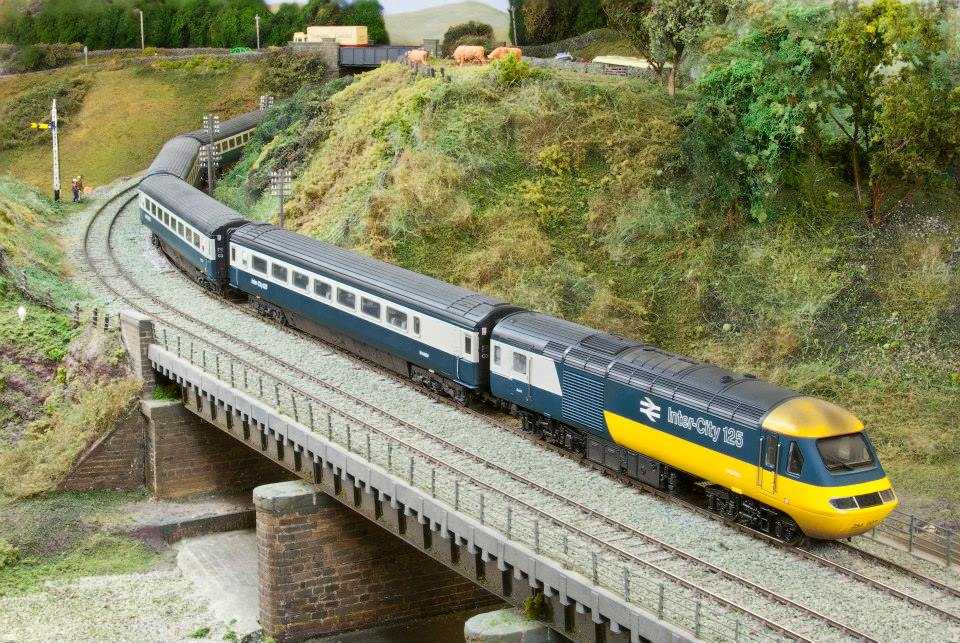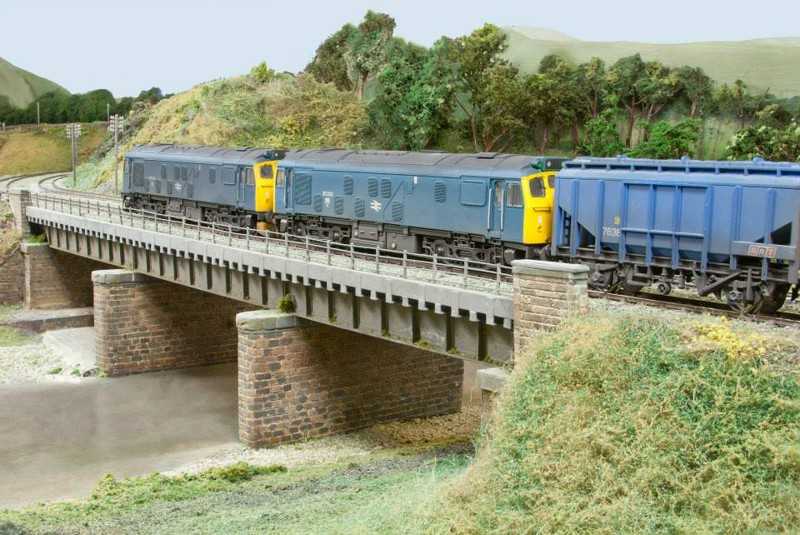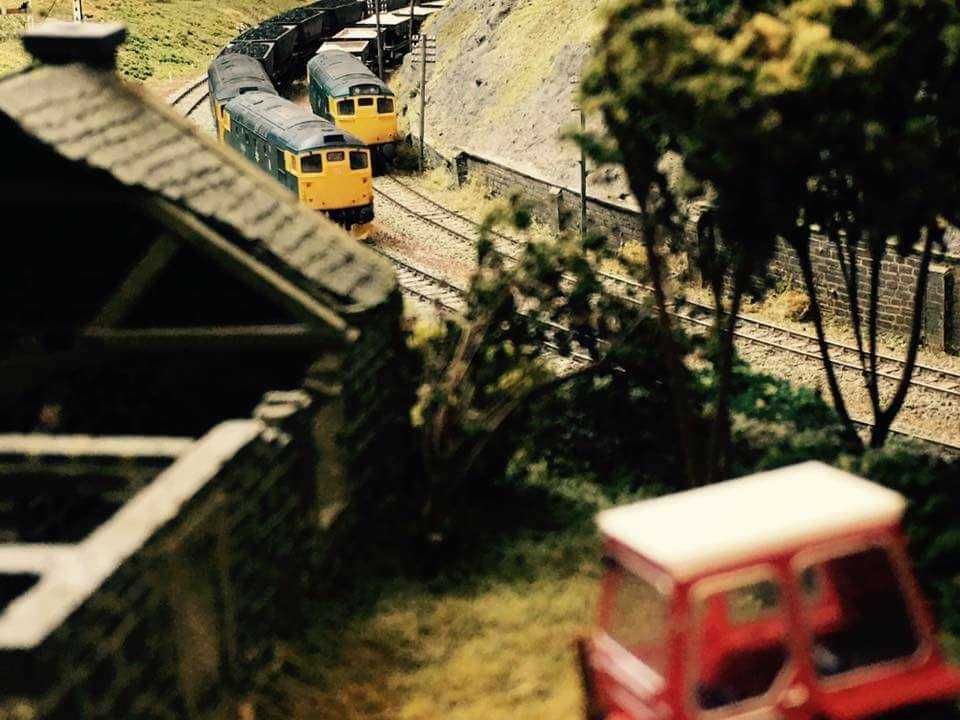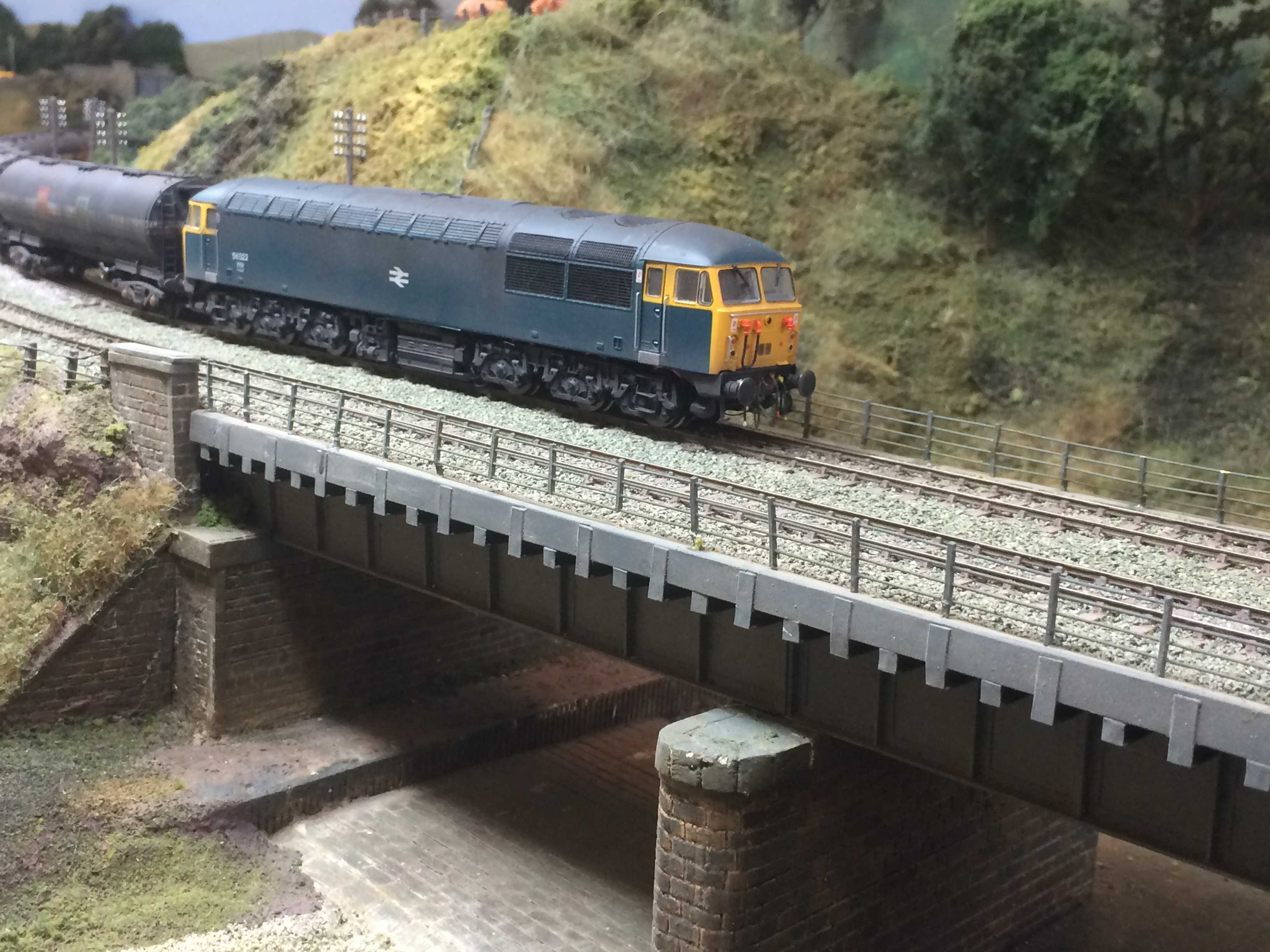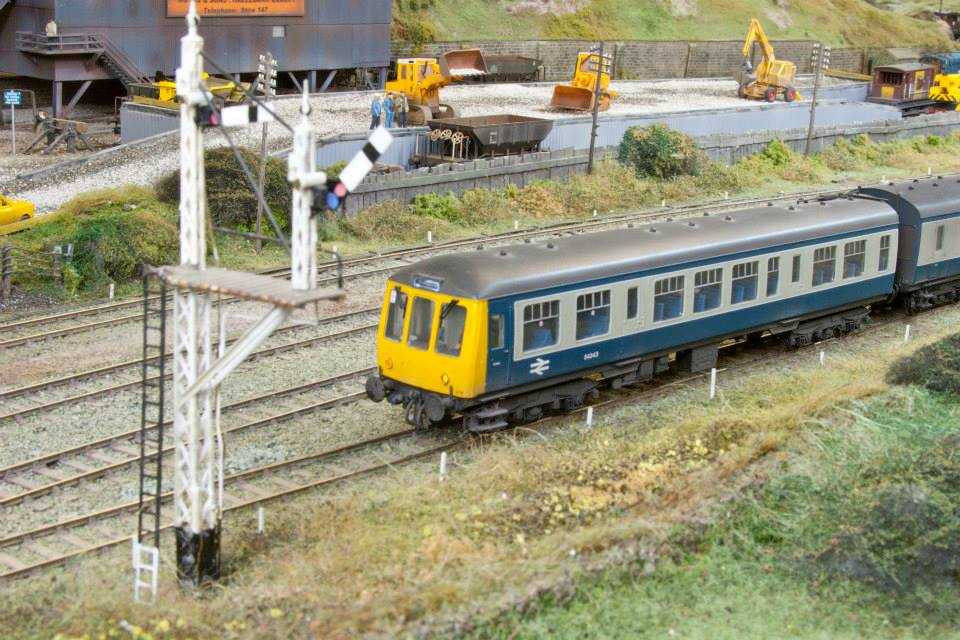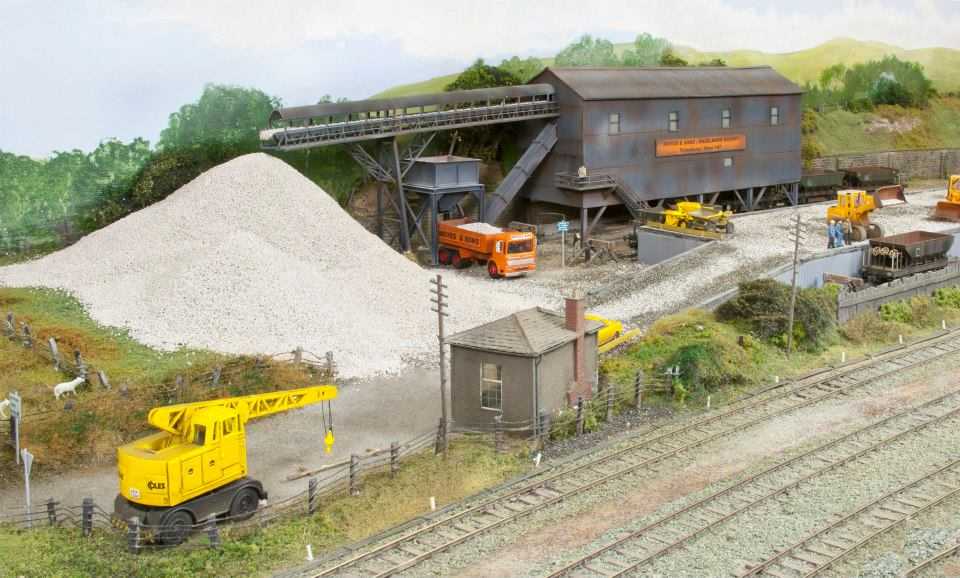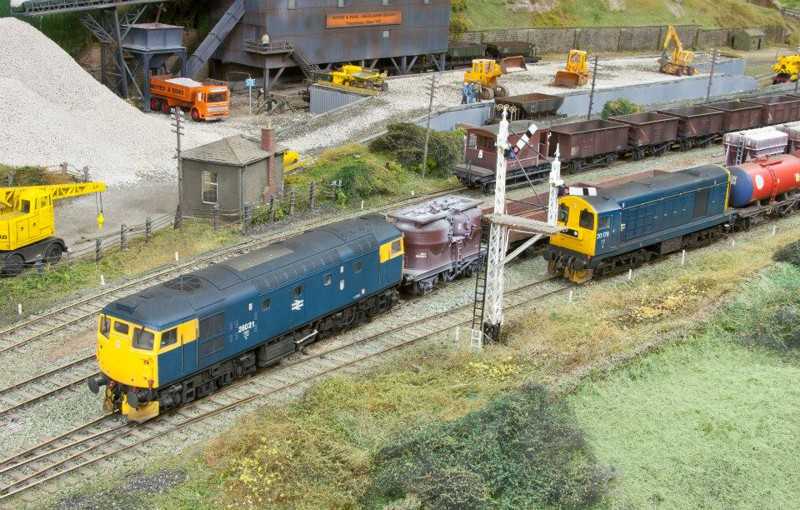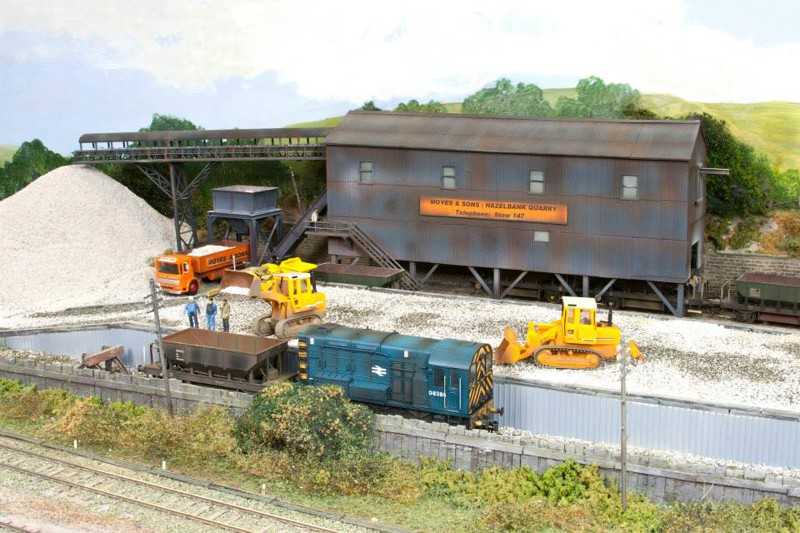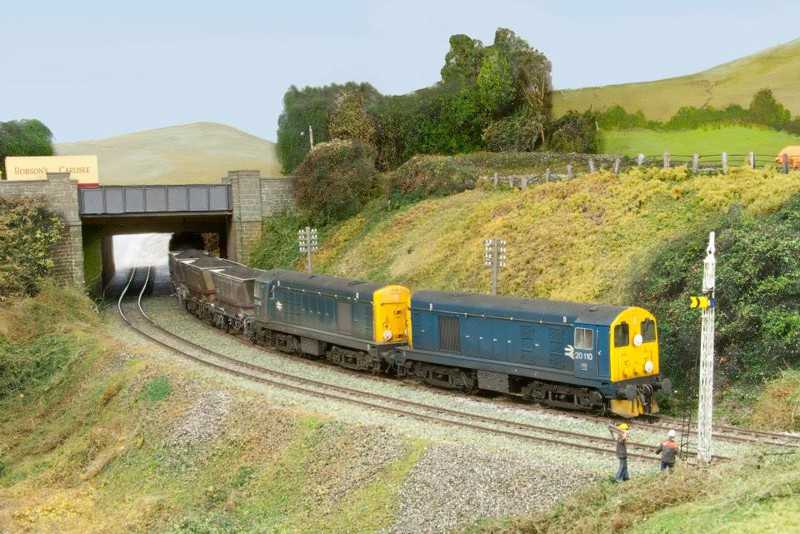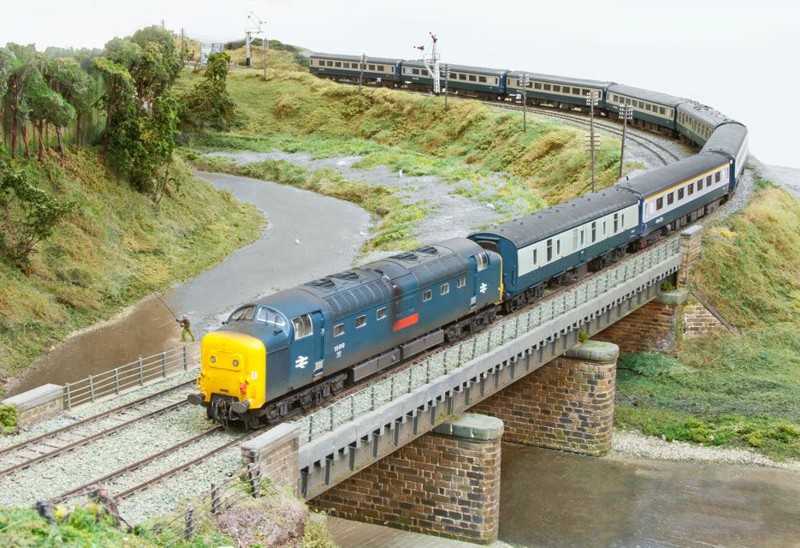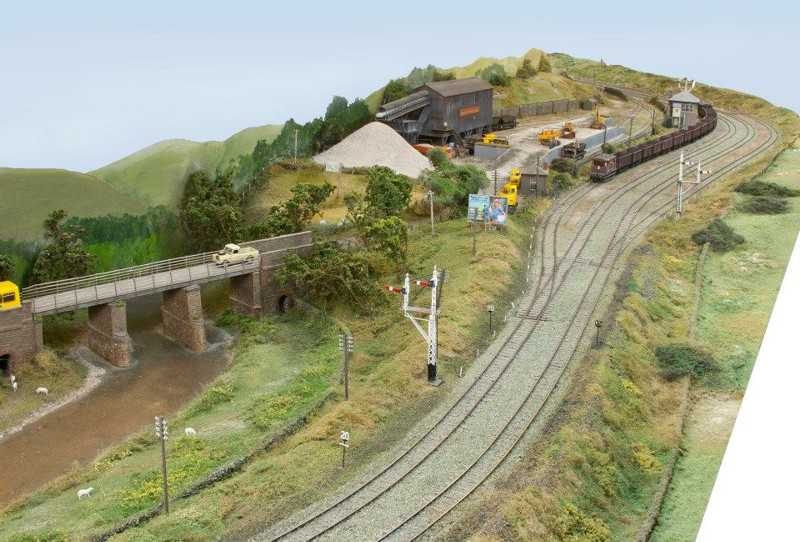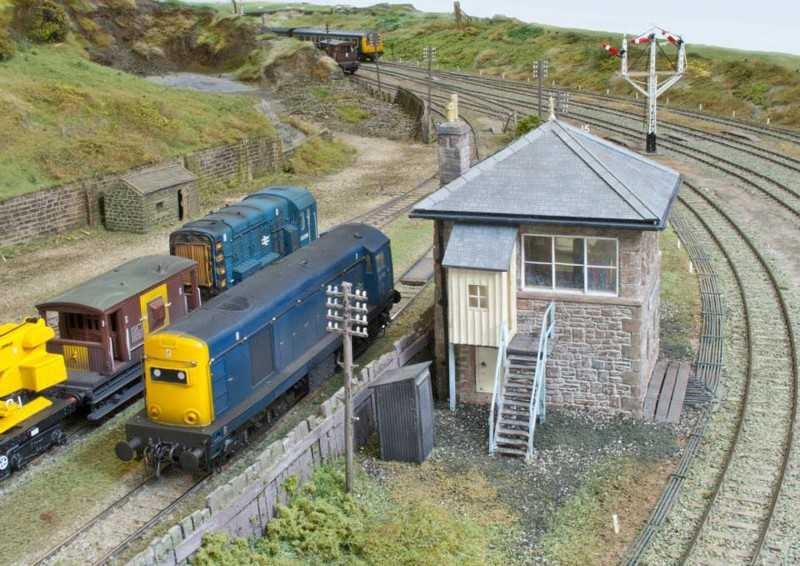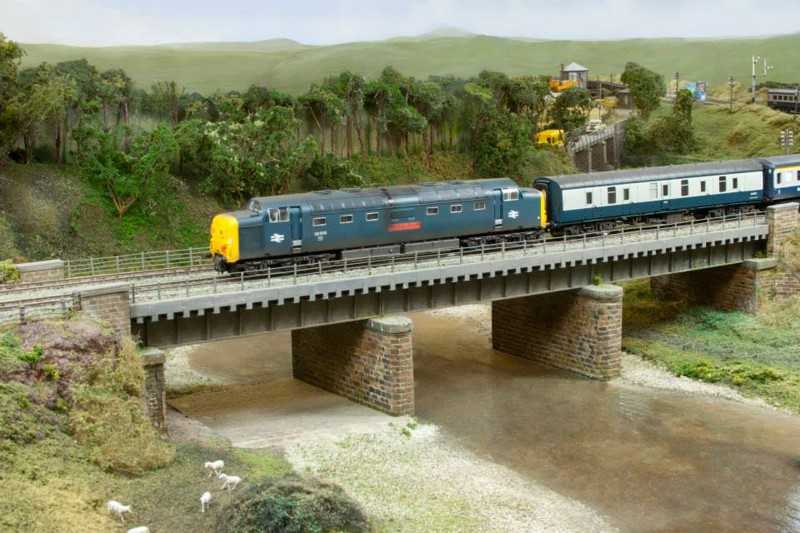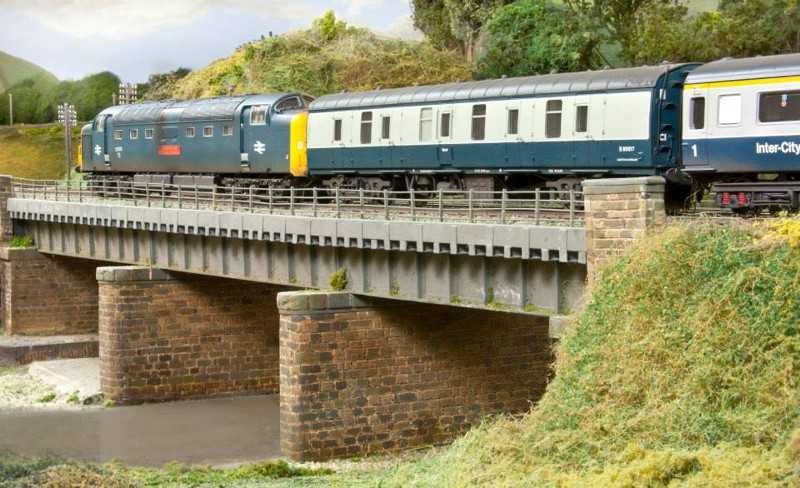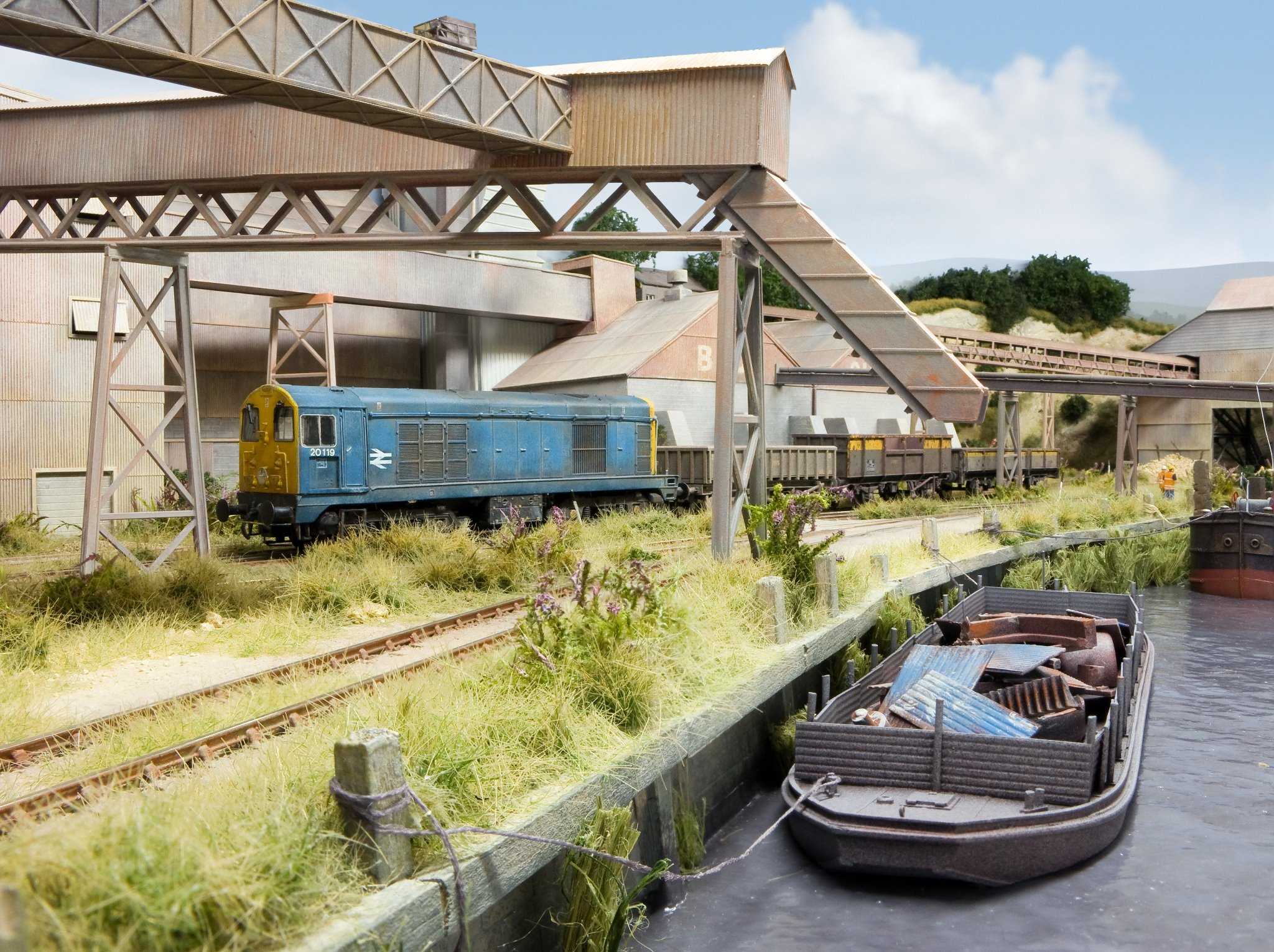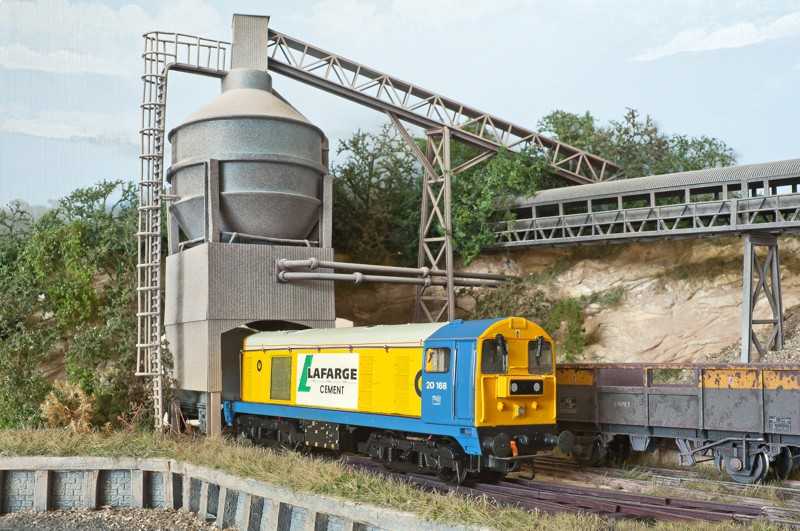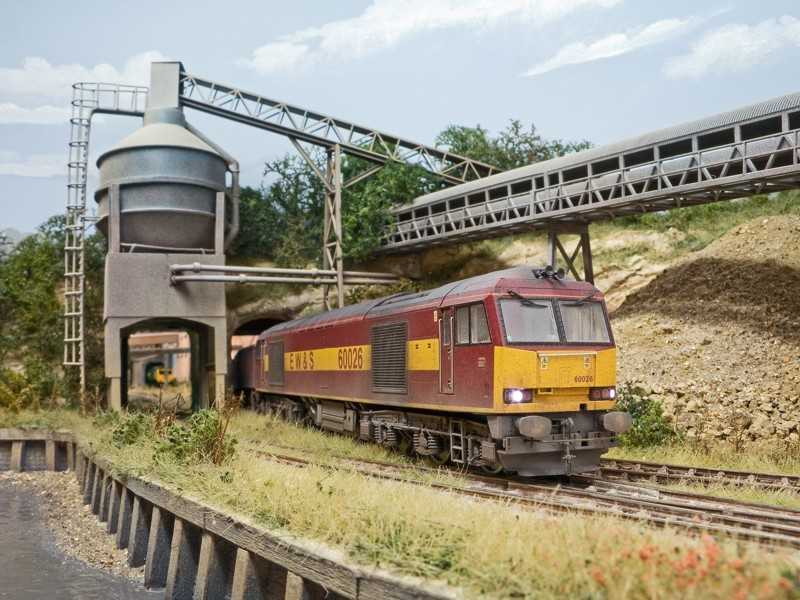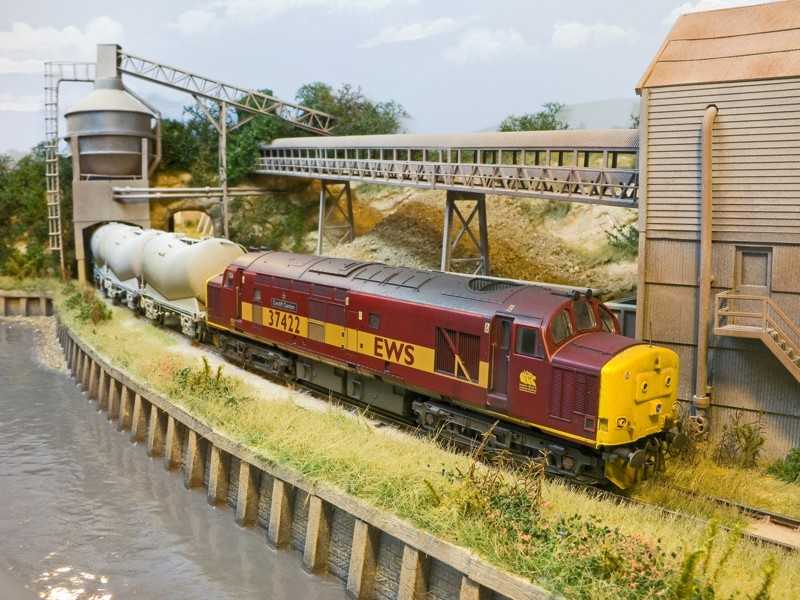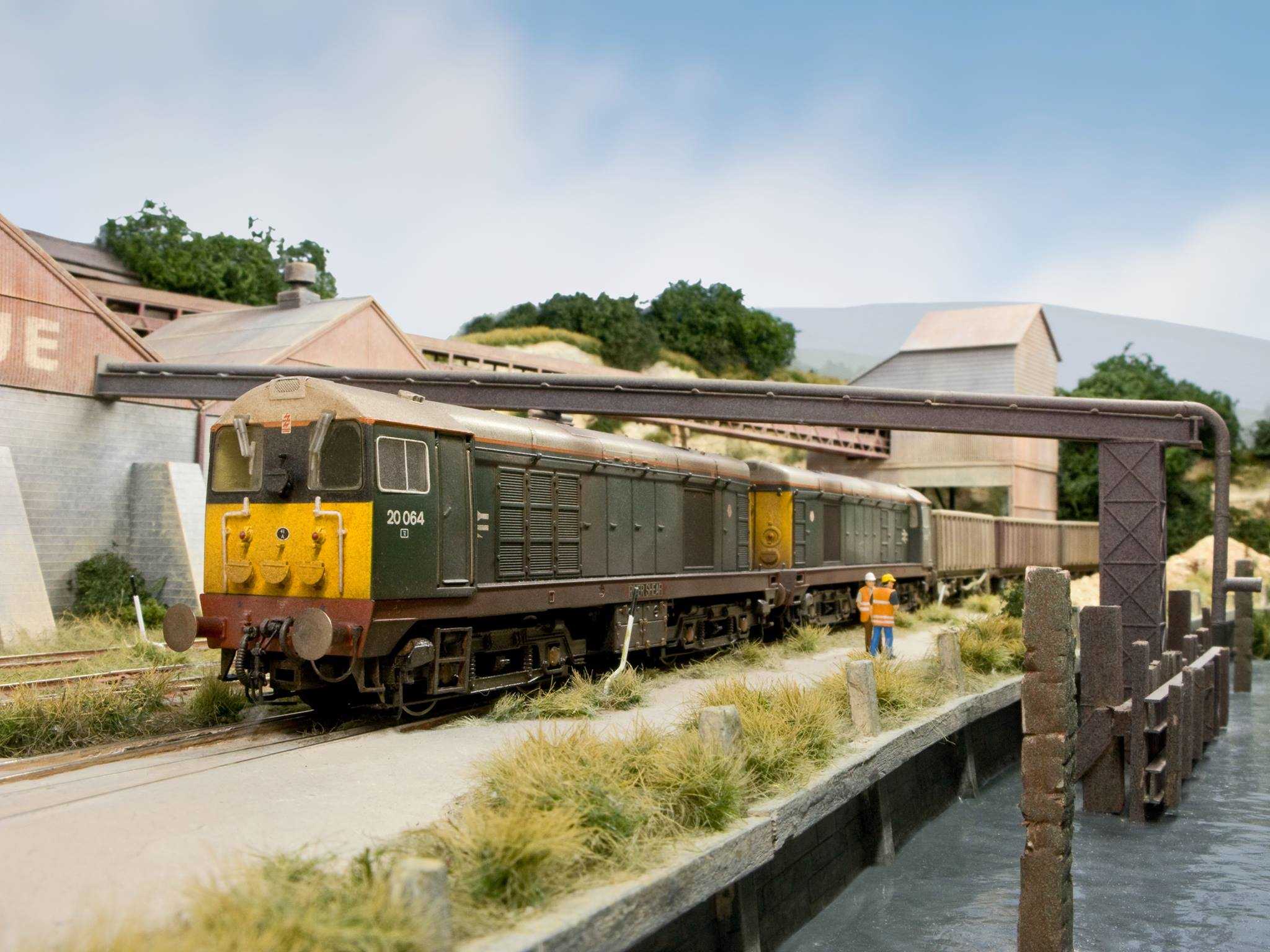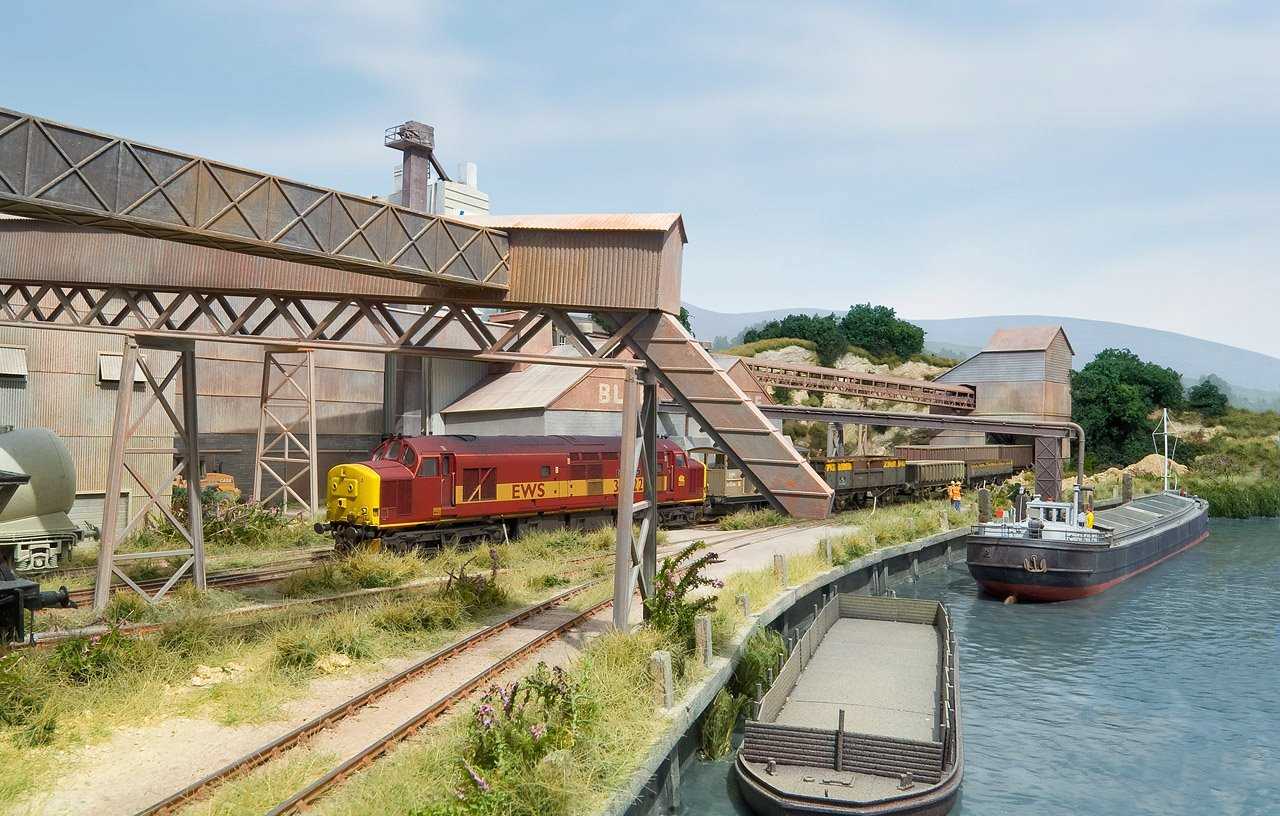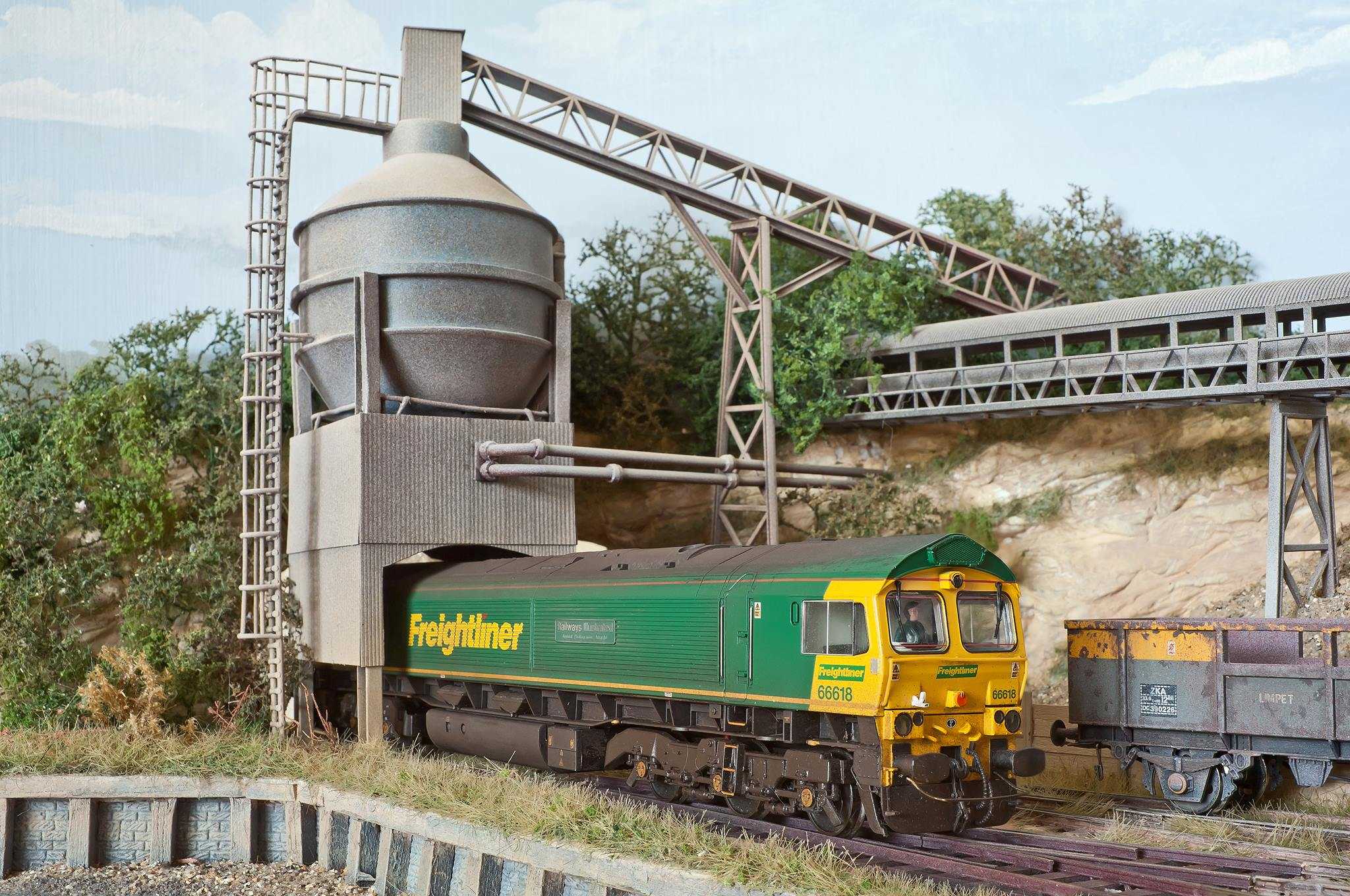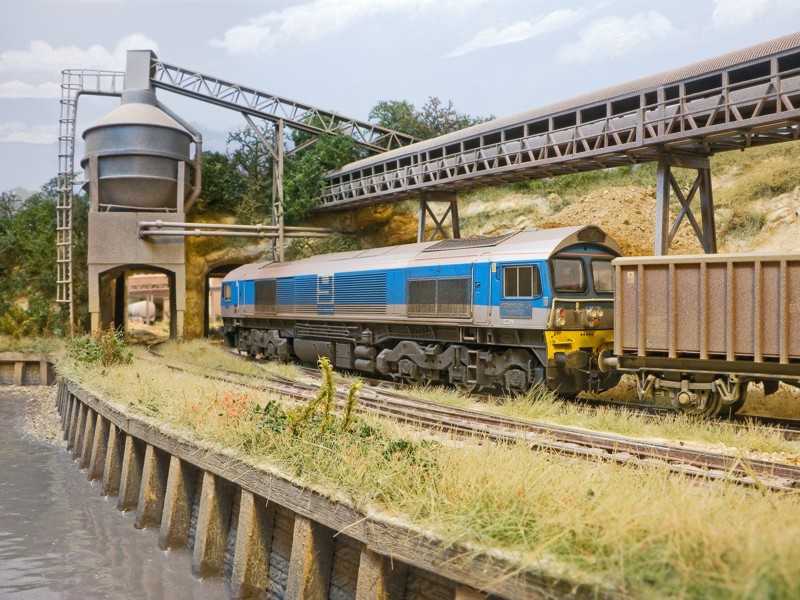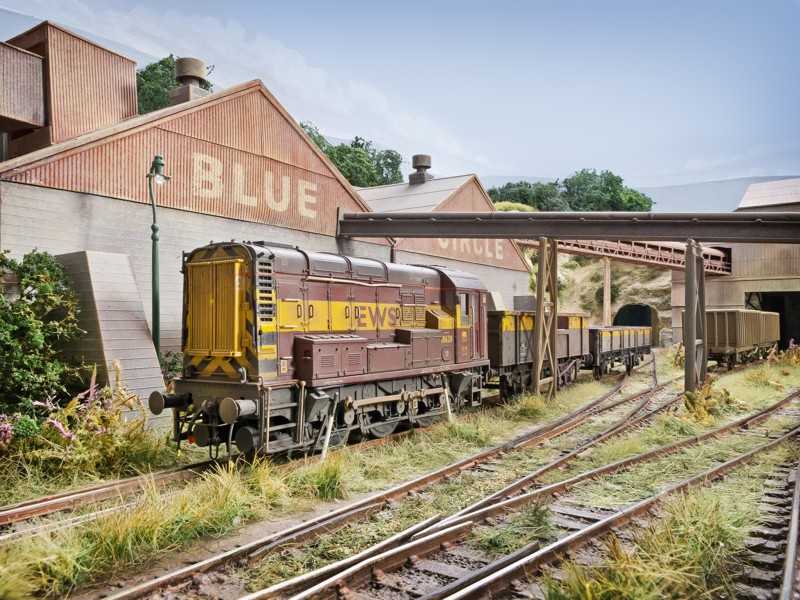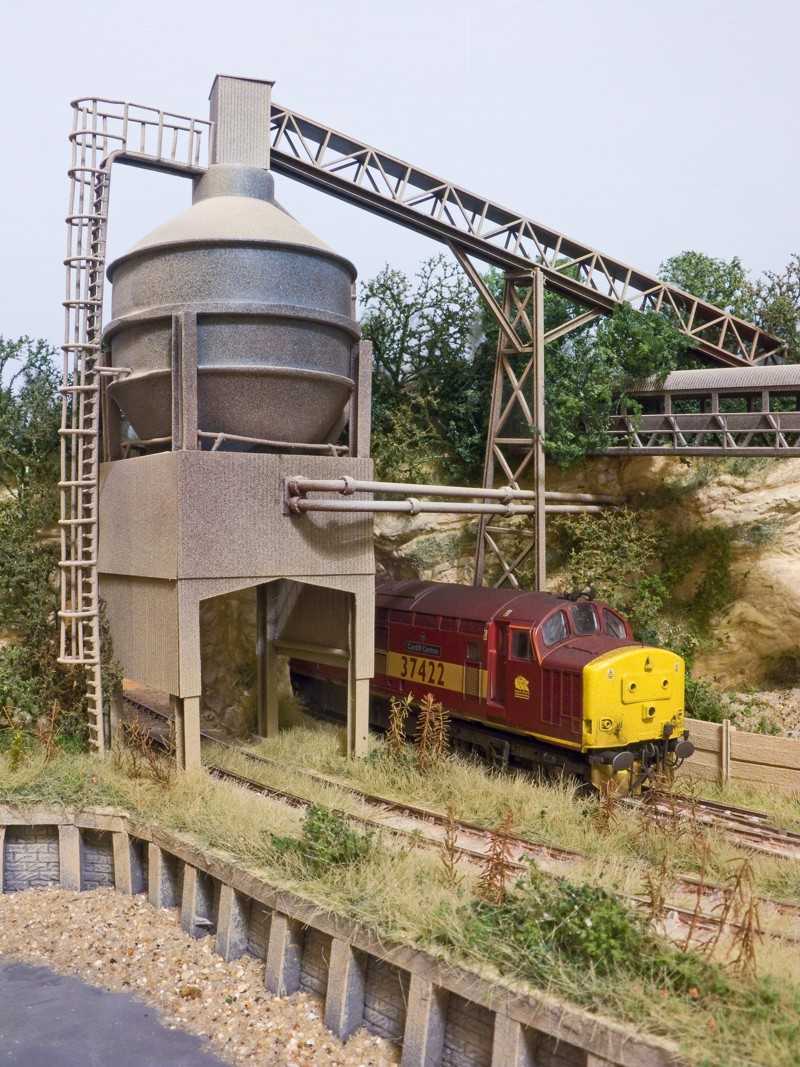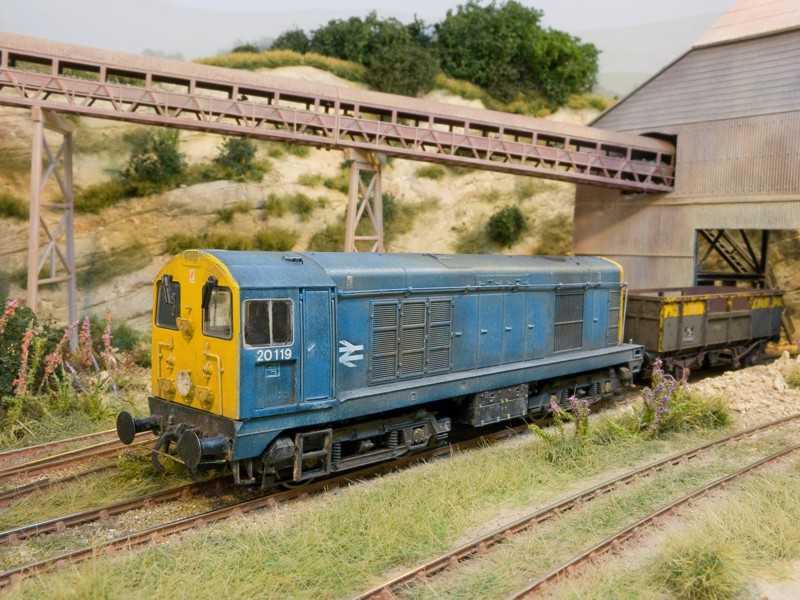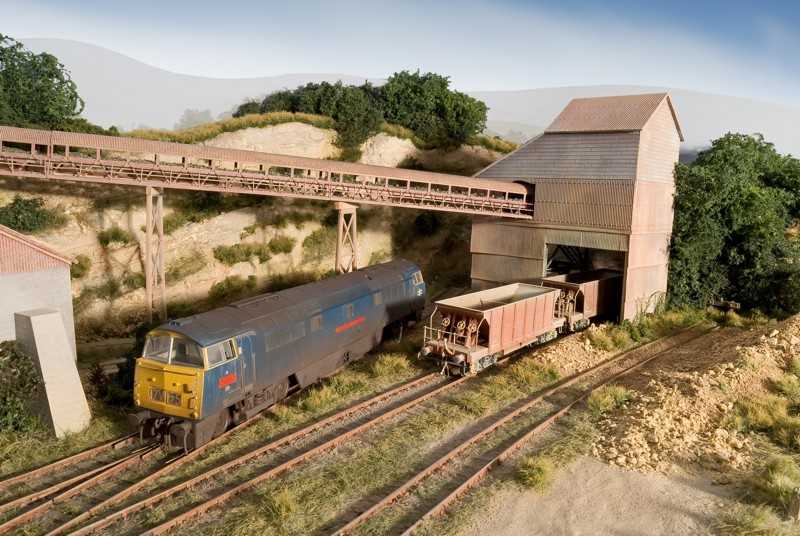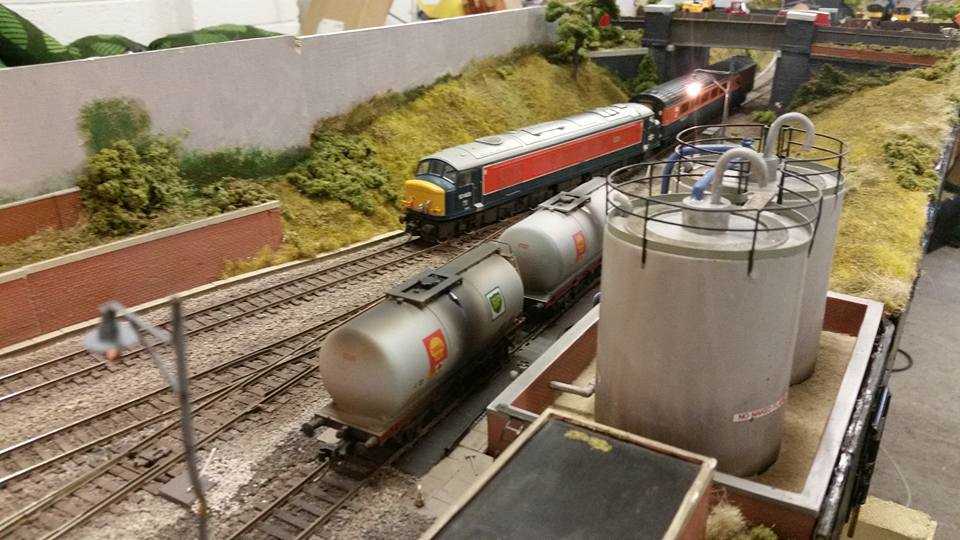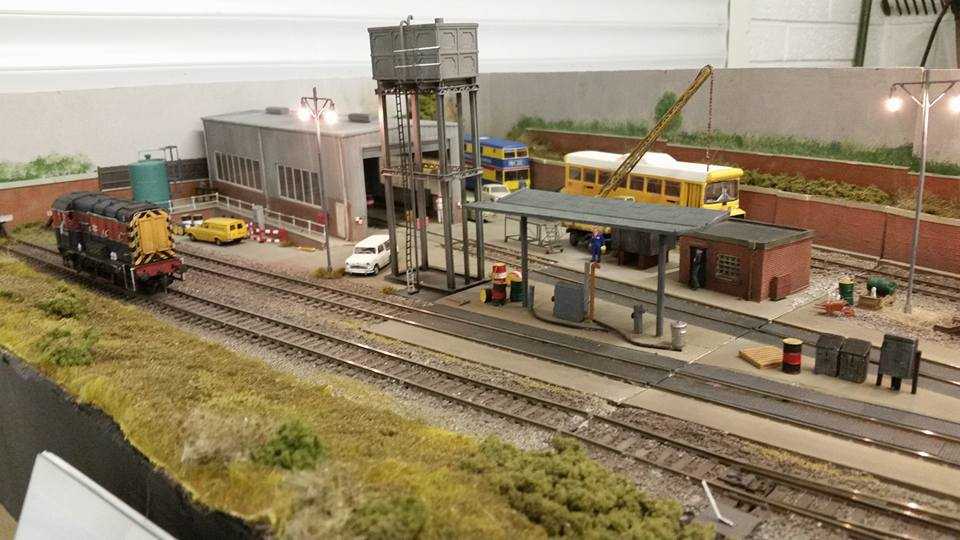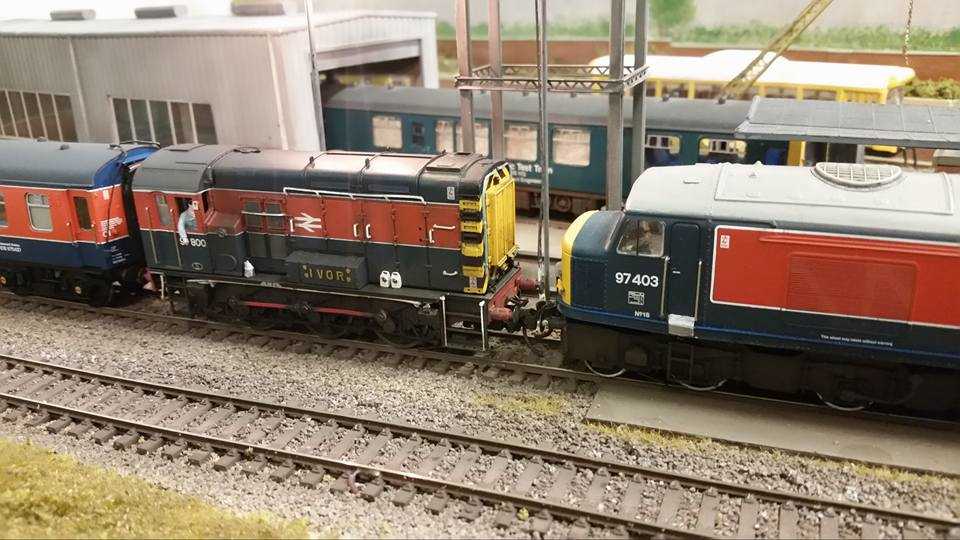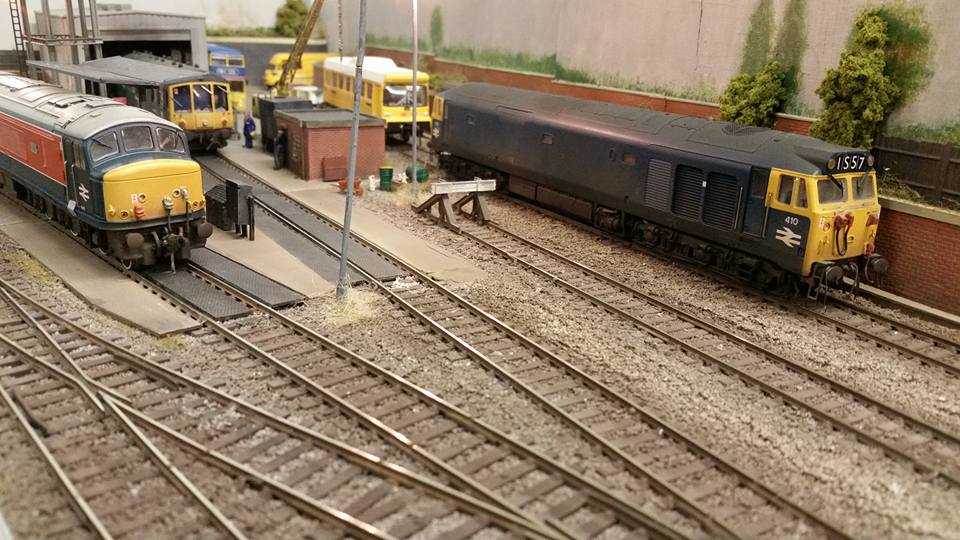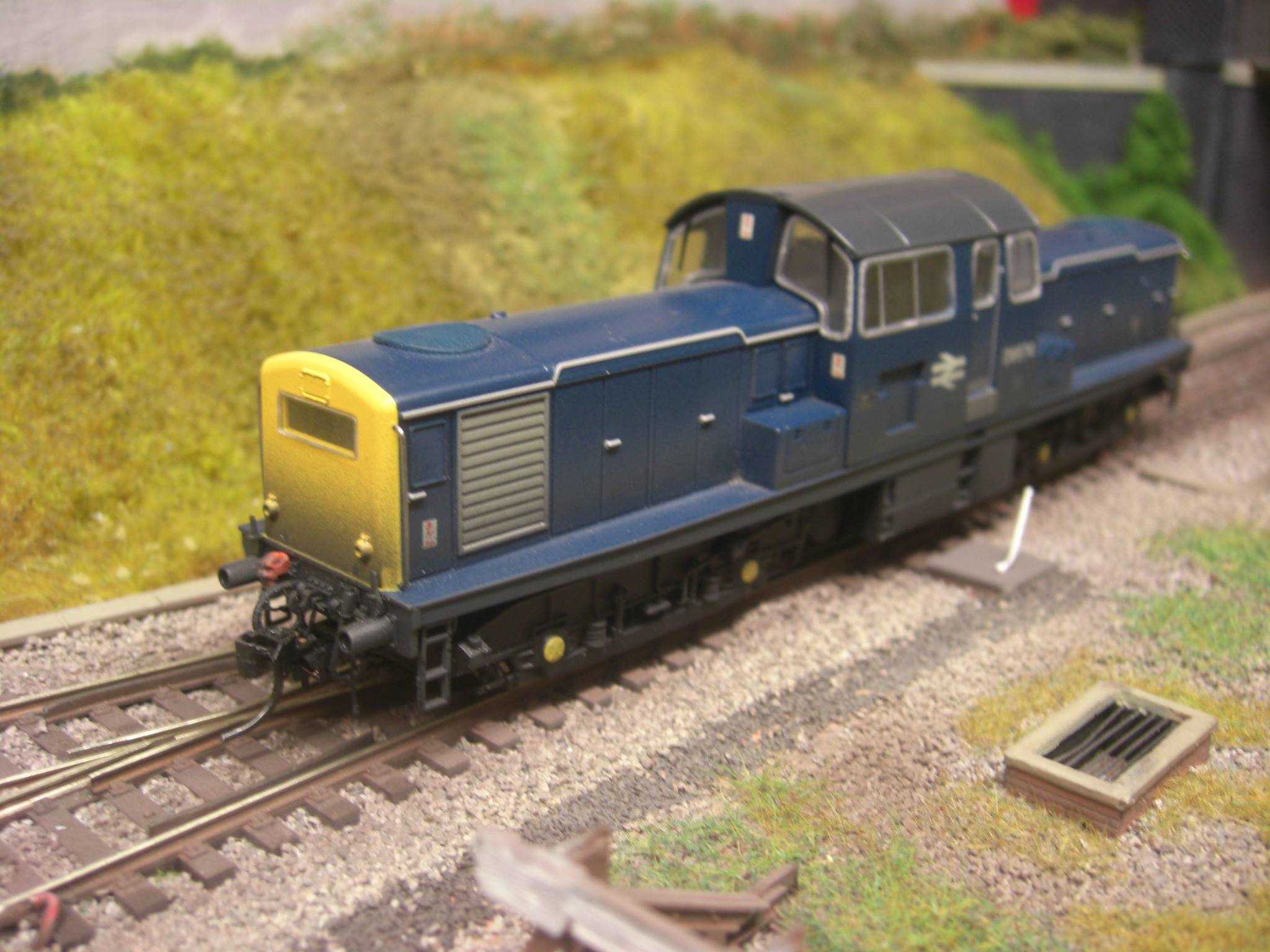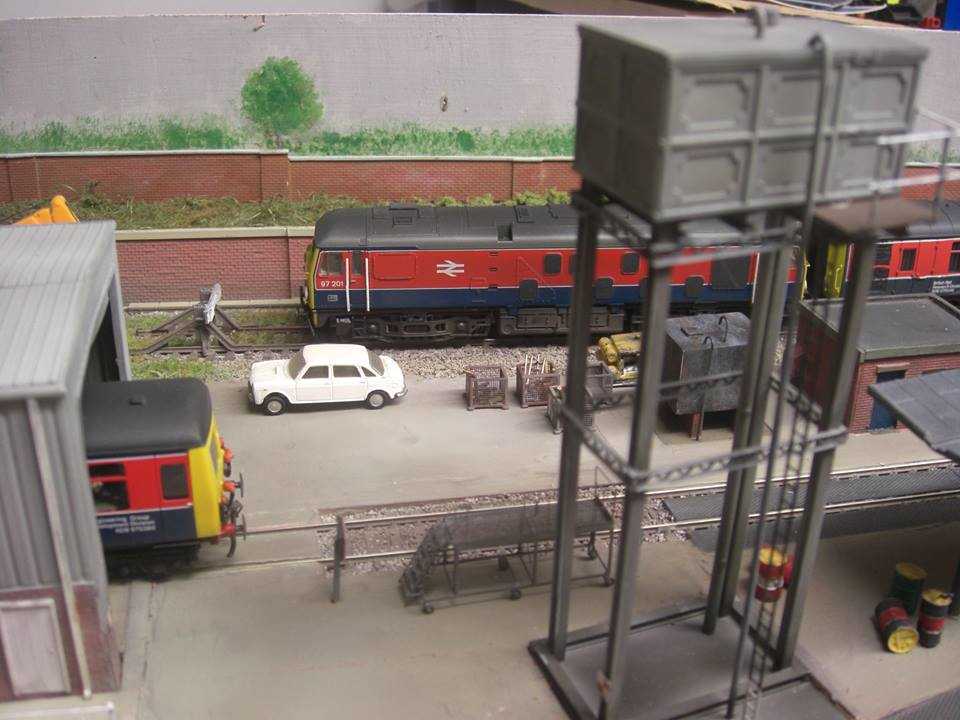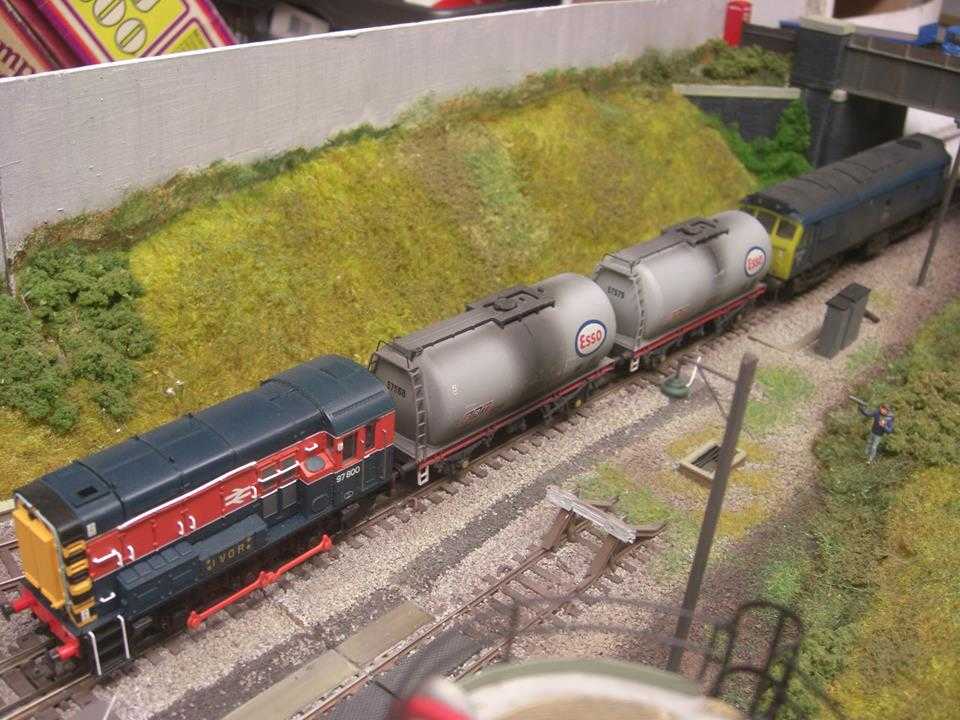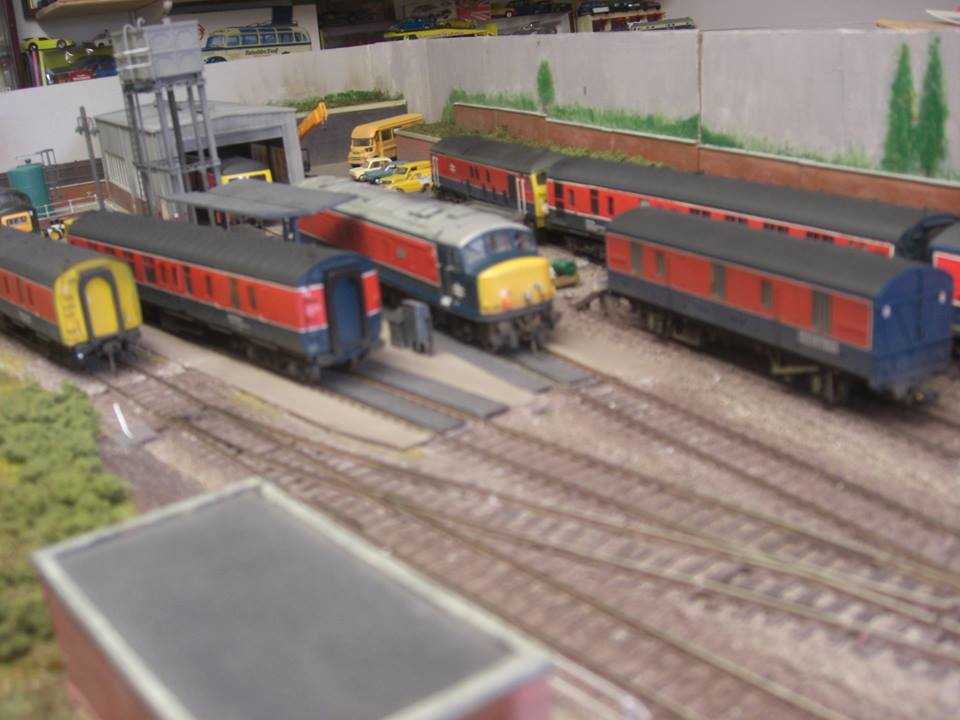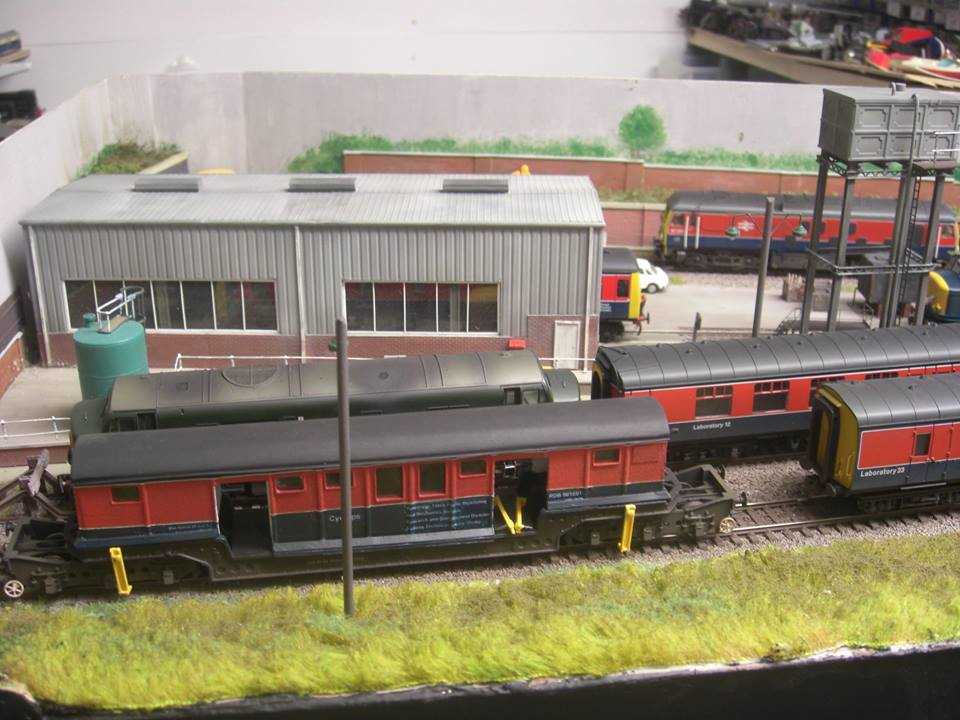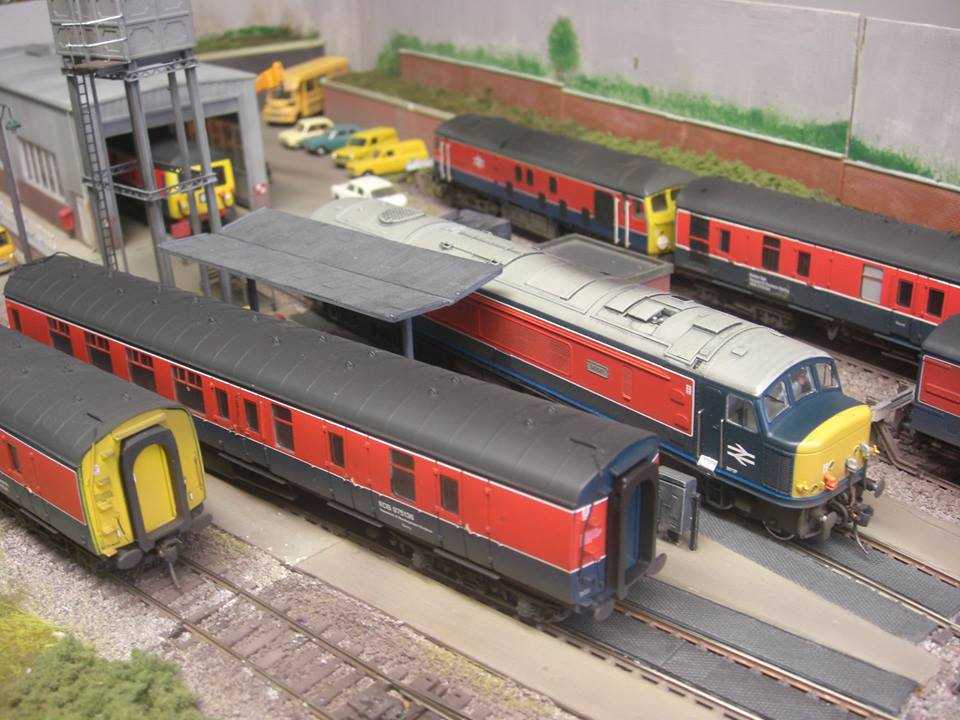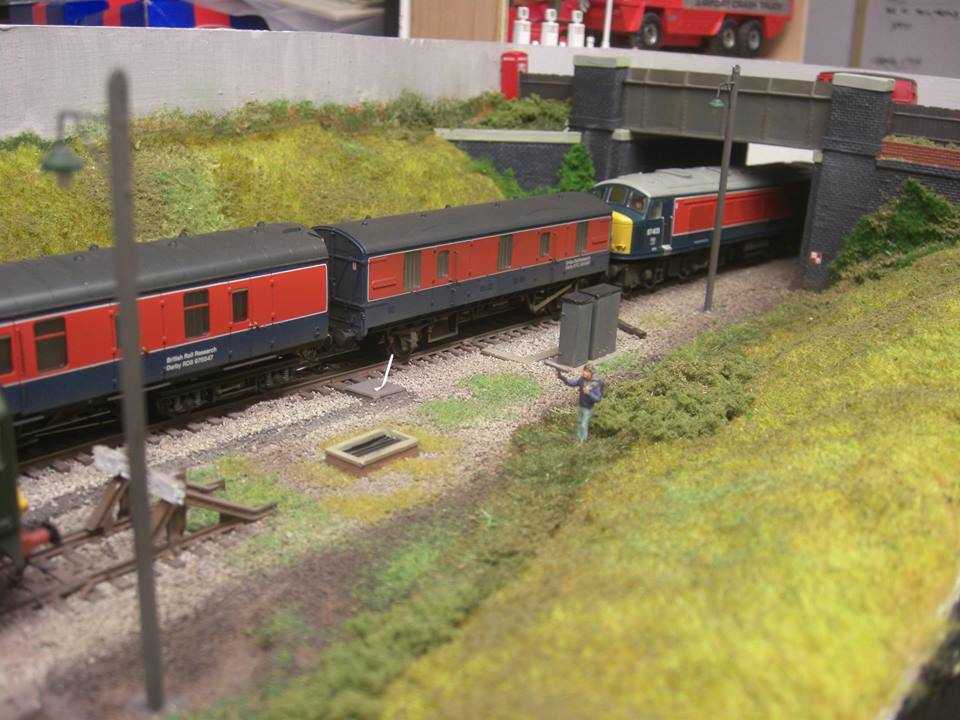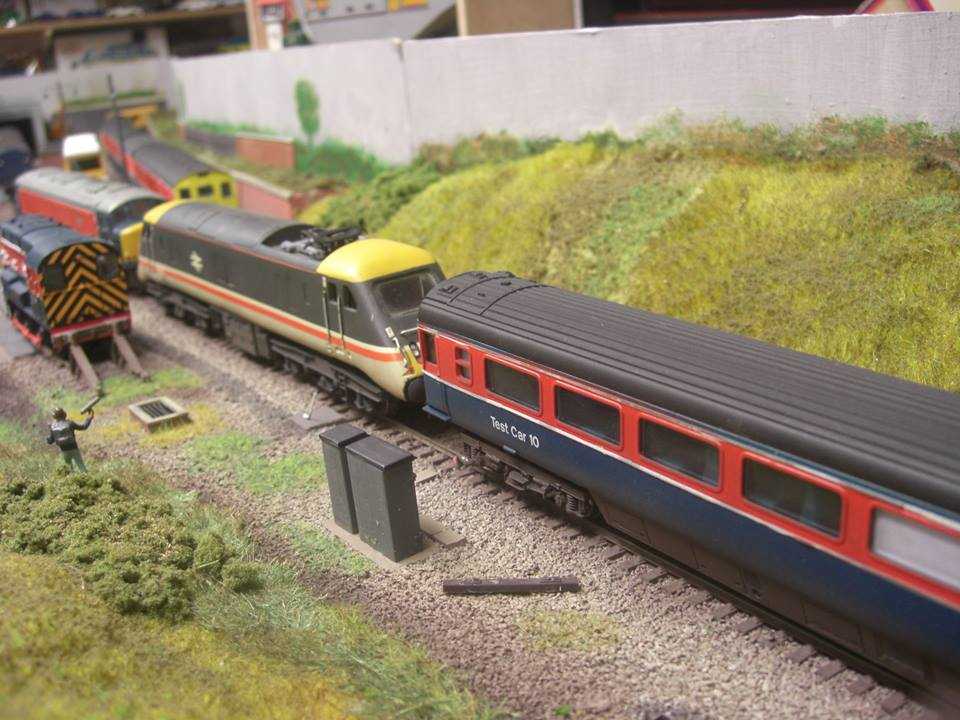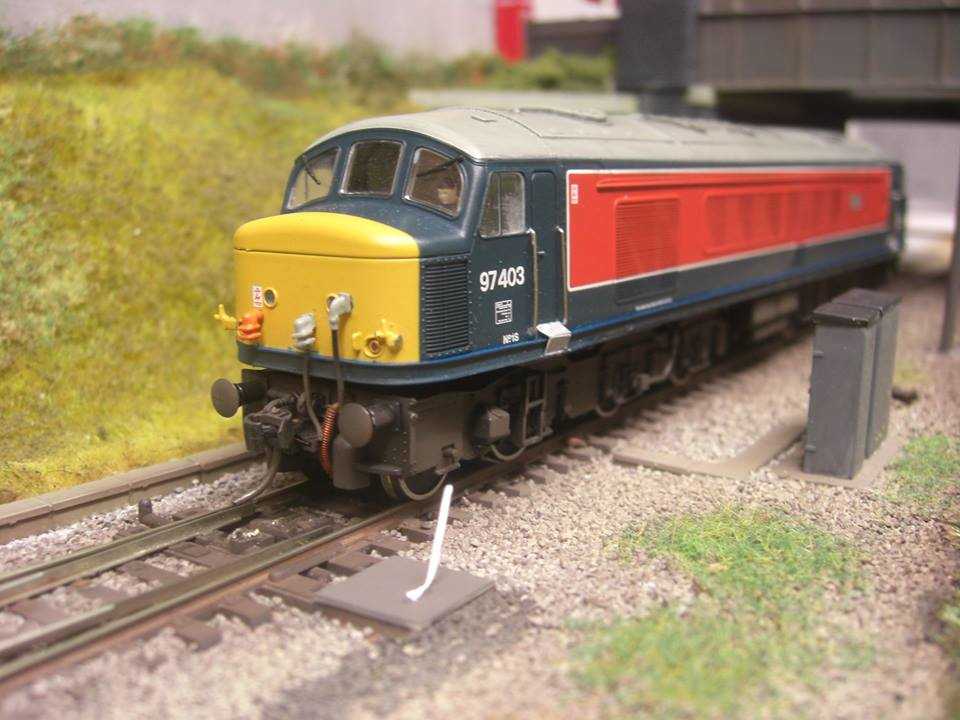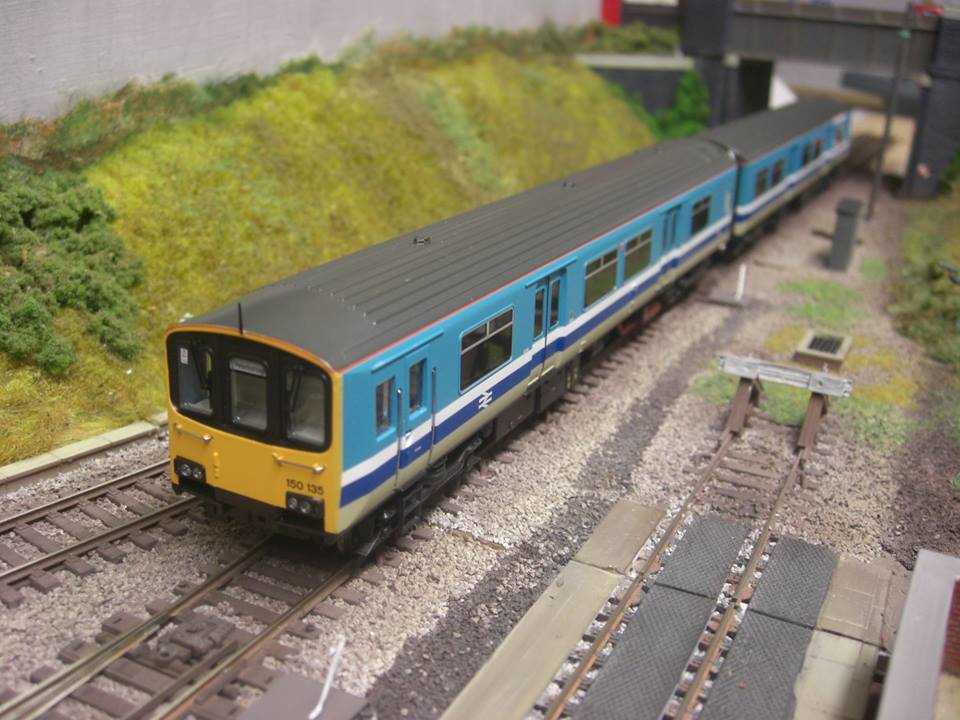Hazelbank :-
The Beeching cuts were far-reaching, and although having the closure of the line set firmly within its sights, the act never actually claimed the 'Waverley' route. It was decided that the route was far too strategically important to lose and so, along with the vast local protests against its closure, in January 1969 its survival was secured.
In the following years, BR never spent a vast amount on re-signaling the route and so, as with other secured lines such as the Glasgow and South Western and the Settle and Carlisle railway, semaphores still abound today with long cross-country sections in evidence.
In the centre of the scenic area is a ballast loading point where stone, quarried from the local Hazelbank Quarry immediately adjacent to the track, is loaded from a crusher plant into awaiting wagons.
The passenger traffic on the line is a mixture of stopping DMUs on local Edinburgh to Carlisle services, loco-hauled express cross-country services and the occasional diverted WCML passenger working that is often class 47, Peak or even Deltic hauled.
The line also sees a heavy usage by cross-border freight traffic with 'mixed' freight consists interspersed with coal trains from the ‘Fife and Lothians' coal fields making their way to the many operational English coal-fired power stations throughout the Midlands.
Hazelbank is a privately owned, finescale ‘OO’ gauge, DCC sound layout operated by the Scottish Diesel & Electric Group (SDEG). Its dimensions are 21’ wide by 14’ 6” deep. The centre well is 6’ x 12’ internally. The layout and all of its associated equipment require the use of a Luton type van to transport. Hazelbank comprises 6 scenic and 4 fiddle yard sections connected by retaining wooden dowels and coach bolts. To fully appreciate and benefit from Hazelbank’s extensive panorama, the layout requires viewing access to be provided on three sides. Hazelbank is a fully self-supporting layout. All of the supporting legs are covered by an all-round black fire-proof curtain
Some images, copyright of Chris Nevard/Nigel Burkin
Cement Quay :-
Cement Quay, a DCC sound layout was created and built by Chris Nevard. His idea for building the layout evolved as a result of him observing the full-sized railway freight operations taking place in various cement and quarry sites throughout the UK whilst being very impressed by watching the large and heavy locomotives working their bulk train loads into and out of these terminals.
Cement Quay is part of a cement terminal situated somewhere on the river Severn in Gloucestershire. To add interest to the scene, a stone terminal is also featured.
Due to the sheer size of the SDEG’s locomotive and wagon fleet, Cement Quay can be set and operated in a very wide range of periods. Operations including arrivals and departures of bulk cement trains are worked by a large variety of Diesel locomotives and wagons dependent upon the era being exhibited.
The clock is often wound right the way back through the decades to the early 1970s and the start of the BR Blue era where the appearance of classes such as the mighty Class 52 ‘Westerns’, the classically designed Class 35 ‘Hymeks’ and other Western Region stalwarts such as the Class 50 can be seen working their Cement flows.
Many other classes associated with operating this type of traffic throughout the 1970s and the 80s such as Classes 20, 25, 31, 37, 40, 45 and 47 also make regular visits to Cement Quay on their various Western Region Depot diagrams.
Class 08s and a ‘Blue Circle’ branded Class 15 ‘Teddy Bear’ can also be seen shunting within the Cement Quay and Old Quarry Wharf terminals.
As the eras role on through the nineties, the latter surviving BR locomotive fleet are still in evidence but now appear, proudly wearing their new ‘Sectorization’ liveries, alongside the brand new Mirlees Blackstone Class 60s. The odd ‘Construction’ liveried Class 56 can also be spotted visiting the site.
As we move towards the present day, locomotives such as the widely used Class 66 locomotive owned by Freightliner operate the services to and from Cement Quay along with those of the class owned and operated by DB Shenker (formerly EWS). As Freightliner and DB begin to lose the contracts for the traffic from Cement Quay to their competitors’, this allows for the reappearance of the Class 56, now owned and operated by ‘Colas’ and sporting their rather garish Yellow and Orange livery.
Scale 1/76 - OO
Size: 13' x 2' (including fiddle yard)
*Images copyright of Chris Nevard*
Welby Lane RTC :-
Welby Lane is a DCC sound layout and represents the Railway Technical Centre (RTC) including the test tracks of Old Dalby and Mickleover in the 1970’s / 80’s in OO scale. Measuring 20 feet long by 2feet wide end to end. All locomotives are sound fitted and stock is either modified RTR , kit or Scratchbuilt with many interesting and one off items .

